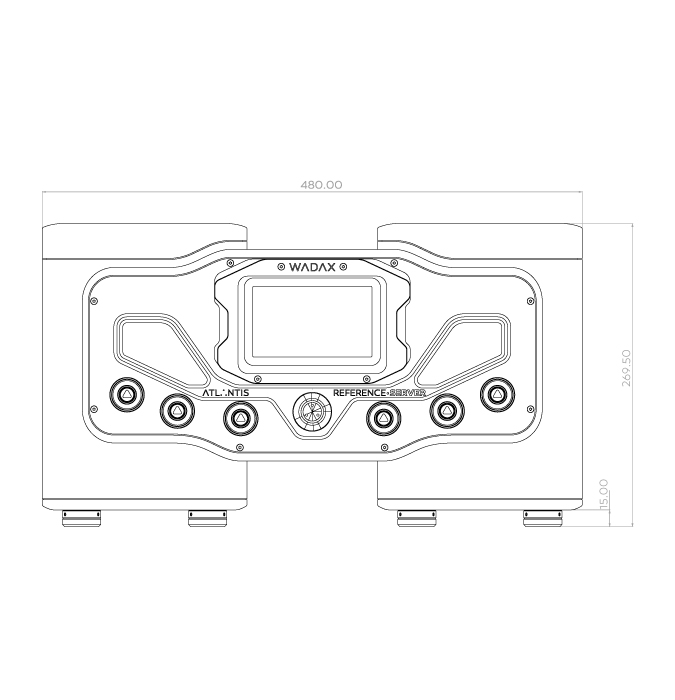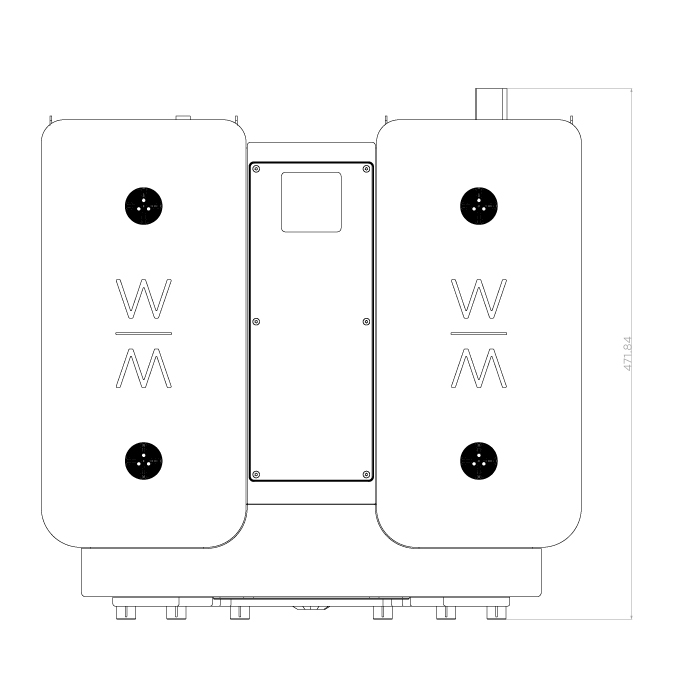0
You have 0 items in your cart
When Wadax designed and built the Atlantis Reference DAC, their goal was to redefine the musical possibilities of digital media. They succeeded! A combination of solid, sound engineering and breakthrough technology, the Reference DAC has been universally recognised by the world’s most exacting reviewers as not just better than competing products, but better by a considerable margin. Setting a completely new benchmark for performance, it has quickly become THE Reference, the product against which all others are measured.
Now, using the same rigorous design approach, WADAX has turned its attention to server technology. We have questioned accepted wisdom – whether it is to do with operational protocols or circuit topology: We have applied the same exhaustive attention to engineering detail – whether it’s the chassis design or the future-proof, card-cage construction: Where conventional hardware, thinking and solutions have proved inadequate or a gate on performance, we have redesigned or reinvented. The result is the Wadax Atlantis Reference Server – a server like no other. It uses unique, breakthrough technologies to deliver musical performance that other servers can’t hope to match. But more than that, our goal was to match unrivalled musical performance with the unprecedented reach and access of streamed music and high-res file replay. Once again, Reference has to mean Reference. Once again, we have succeeded.
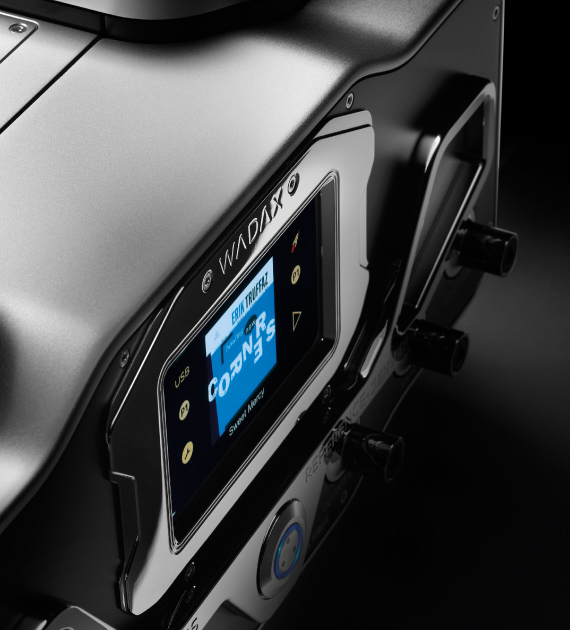
“The Reference Server’s overall sound is one of greatly increased clarity, dimensionality, resolution, lifelikeness, rhythmic drive, and musical vividness. These qualities were so elevated by the Reference Server that I’m going to say that the Server is an even more significant product than the Reference DAC.”
[ ROBERT HARLEY, THE ABSOLUTE SOUND, APRIL 2022 ]
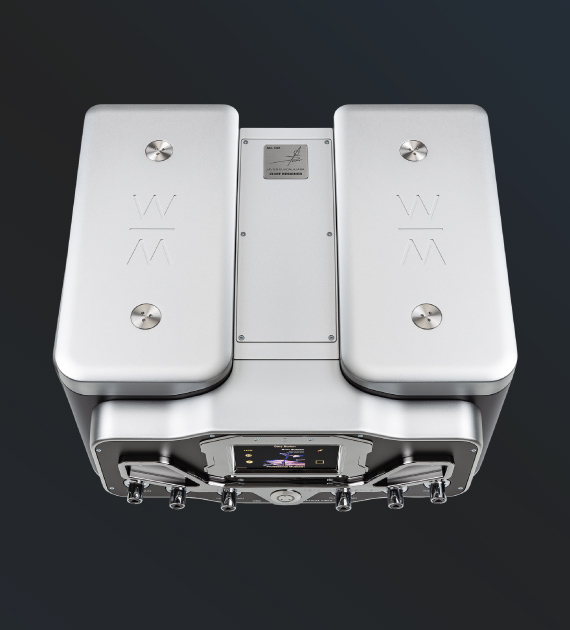
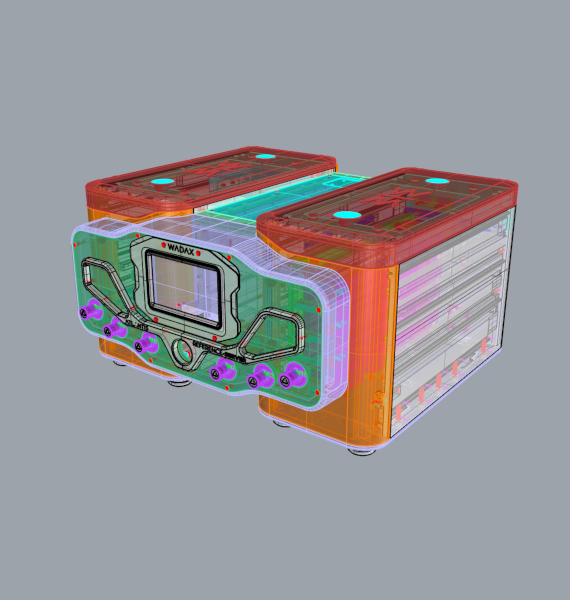
Digital signals are vulnerable: They can be impacted by microphonic interference and RFI/EMI induced noise, degraded by poorly executed transfer standards and badly engineered connectors. Preserving their integrity means first protecting them from external influences…
Isolation from spurious noise and power supply artefacts
Research into the fundamental engineering parameters limiting the performance of existing streamers quickly established power supply quality and related noise as critical factors in undermining the quality and integrity of stored and streamed music files. Predominantly based on computer hardware, many servers rely on stock power supplies and regulation, even if they are fed from an audio grade transformer.
The Reference Server is driven by a heavily regulated, multi-stage power supply derived directly from the supplies developed for the Reference DAC. It is so sophisticated and so quiet that the noise-floor of the DC reaching the unit’s active devices is almost impossible to measure. It’s so quiet, that during development we needed to rely on virtual modelling and to develop entirely new measurement protocols to assess advances in performance.
But there’s no such thing as too much power supply, so the Reference Server is supplied ready to accept the upcoming, external Reference PSU, a full-chassis upgrade that results in almost complete freedom from AC noise, ground noise, RFI and EMI induced interference, establishing the foundation for unprecedented performance from streamed music and file replay.

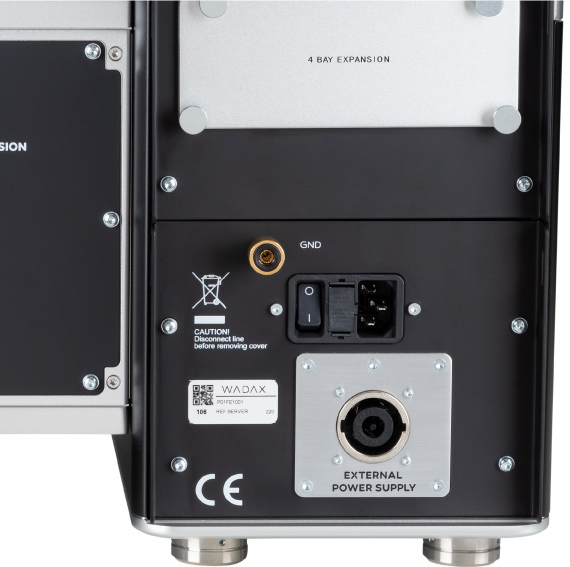
Isolation from mechanical and electrical breakthrough
The Reference Server’s precision machined chassis is a complex and ultra-rigid construction that doesn’t just isolate vulnerable data from the outside world, it isolates the individual sections within the server itself, mechanically and electrically grounding each critical section, preventing the transfer of mechanical or radiated energy from one to another. Safe from external noise sources, the massive outer housings and precise card slots for each separate circuit block ensure that your fragile digital data is safe from self noise generated within the replay chain too.
“It’s not an incremental advance in sound quality—more of the same but better. Rather, the Wadax pair sounds different in kind rather than in degree. The qualities that the Wadax embodies are so important musically. The Wadax conveys a feeling of spontaneity, vitality, and contemporaneous music-making that is the antithesis of canned and sterile.”
[ ROBERT HARLEY, THE ABSOLUTE SOUND, APRIL 2022 ]
Isolation from the network
At first, this might seem counter-intuitive. After all, high-res files stored on your server and files streamed by it all pass across your domestic network. That’s unavoidable. But the network – even the most carefully constructed network, using audiophile switches and cables – is still an incredibly noisy environment, based largely on computer industry hardware and protocols that have almost no audiophile sensibilities. Storing and rendering a file with extreme care is pointless if you then use a noisy network to transfer it to your DAC!
Rather than relying on the Ethernet to carry your fragile data from the Reference Server to your DAC, at Wadax we prefer a direct link using USB. But no ordinary USB. Rather than off-the-shelf components, we build our own USB physical layer driver to ensure accurate data transfer. We provide a mechanical support for the cable, to deal with the issue of incompatibility between the USB connector and heavy, audiophile grade USB cables, so that the weight of the cable cannot compromise the performance of the connection. But most important of all, we provide a unique solution to the issues inherent in data encoding, transfer and cable connections – Digital Waveform Control.
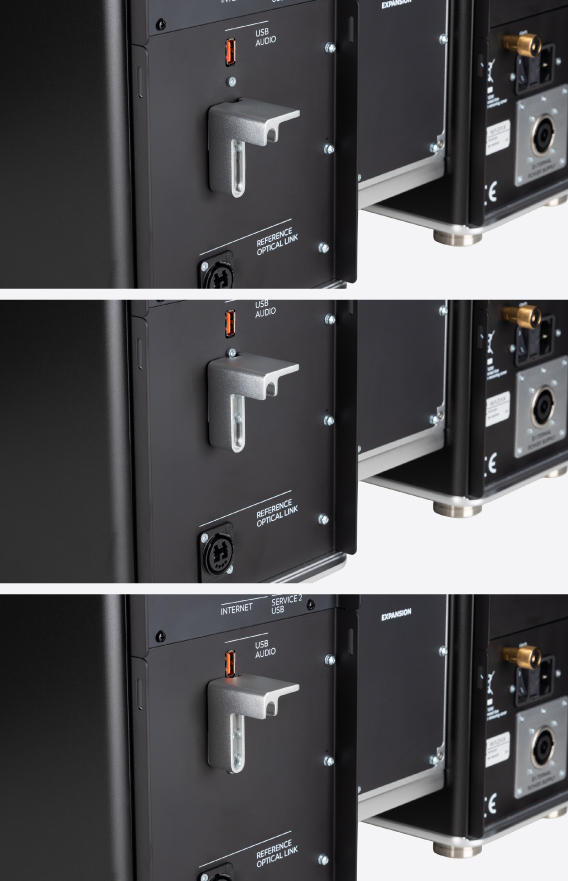
“The Wadax Atlantis Reference Server rewrites the rulebook in terms of size, weight, complexity and ambition… But more importantly, it finally opens the door on a world of simple, high-quality and highly enjoyable musical access, something no other streamer has managed to date.”
[ ROY GREGORY, GY8.EU ]
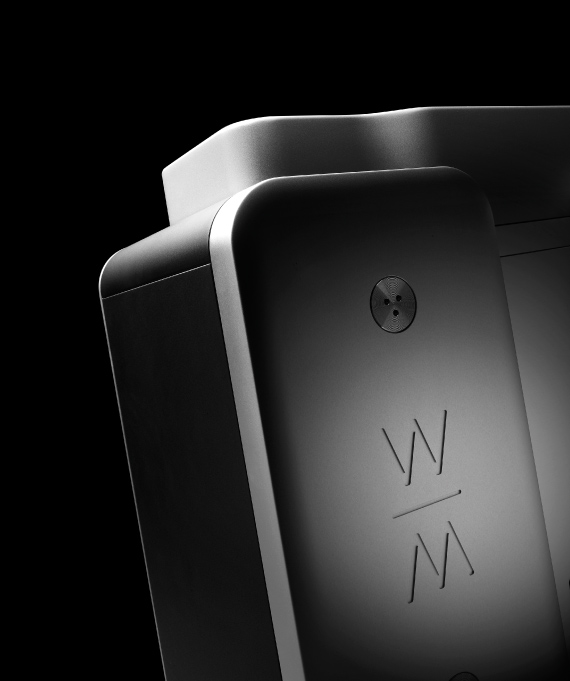
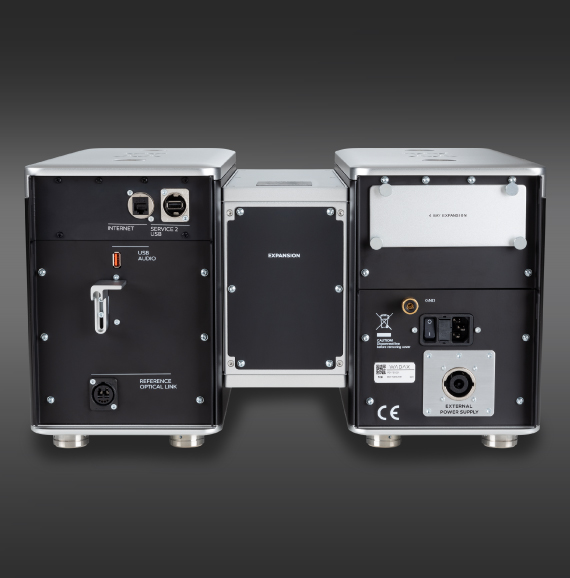
The Challenge…
For years, the computer industry has been built around the total acceptance of bit-perfect copying, essential for the accurate downloading of software and the transfer of data. But from an audiophile perspective, there are a number of issues with current bit-perfect protocols. In theory, a buffered input at the receiver (DAC) end of the transfer prevents cable-induced distortion, but this overlooks two important factors. In any buffered system, the system itself has a transfer function that is constant and thus effectively invisible. But more importantly, digital transfer actually occurs in the analogue domain! The USB encoder has to convert the digital data to voltage square-waves in order to transmit it down the cable, reconverting to the digital domain at the far end. The problem is that producing perfect voltage square-waves is far from simple, even with a purpose built, high-end USB encoder.
Once again – in theory – this shouldn’t matter, as the buffered input clocks and reconstitutes the data. The problem is that this process effectively ‘counts’ data blocks rather than assessing their shape, so that distortion and displacement in the waveform, induced in the analogue domain, remains incorporated in the reconverted digital signal, invisible to the digital encoder. That doesn’t matter in many real-world computing cases, where the raw data is essentially simple binary. But in the case of audio recordings, that data is incredibly time, amplitude and phase sensitive, with small errors rapidly eroding the integrity of the whole.
Once we researched the problem and realised its implications, a whole series of related issues fell into focus. In particular, it explained why different USB cables sound so different – and why different lengths of the same cable also sound different.
“The Wadax, more than any other digital front end I’ve heard, achieves the perfect balance between these extremes. It has an unmatched beauty and liquidity of timbre, yet is highly detailed, vibrant, open, and extended in the treble.”
[ ROBERT HARLEY, THE ABSOLUTE SOUND, APRIL 2022 ]
Digital Waveform Control
The Wadax digital components employ our own MusIC Chip 2 technology, a feed-forward error correction system that compensates for time, amplitude and phase errors in the D-to-A conversion path. Using the same technique – adding the inverse of the transfer function error to the signal – we realised that it would be possible to compensate for the bit waveform distortion in the USB interlink. But whereas in our DACs, we are dealing with a closed system of known elements, with a universal USB interface, the corrective applied would have to be user adjustable. Our response to this challenge is the Digital Waveform Control, a set of three rotary knobs that allow users to adjust/compensate for errors in the rise-time and amplitude of the sent signal as well as the spacing on the return channel (counteracting echoes and reflections). Users can establish three, pre-set compensations, to match the replay characteristics of different streaming services or locally stored files.
The results are as readily audible as they are musically significant, finally lifting high-res file replay to the level of musical performance that it has always promised – yet so seldom delivered.
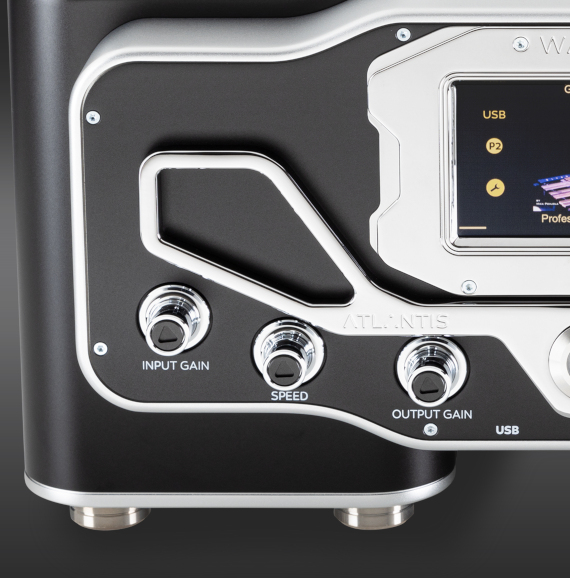
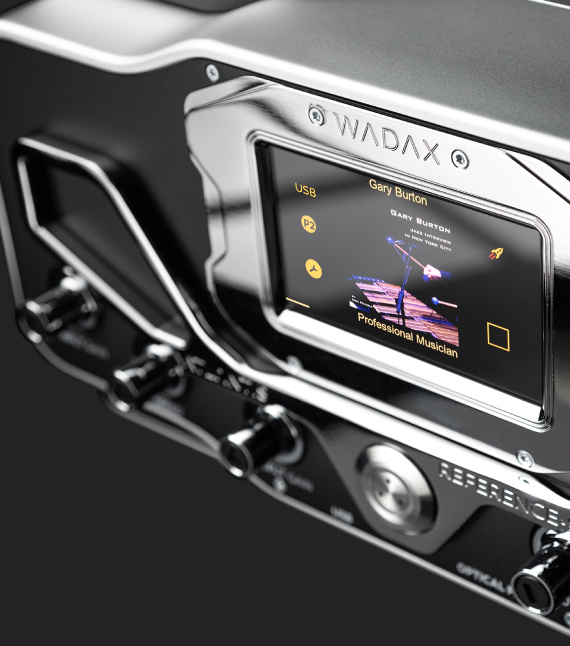
“(DWC) is simple and extremely effective. So effective in fact, that I wonder quite what the long term impact and implications of this approach will be. For the moment, as far as I’m concerned, it has unlocked the promise inherent in streamed music, for the first time making streaming a valid and useful source rather than a necessary chore.”
[ ROY GREGORY, GY8.EU ]
AKASA – because the best transfer system deserves the best interface
Having developed the DWC feed-forward correction, we set out to further advance the interface technology, developing our own, proprietary optical connection to optimise transfer of the incredibly complex and fragile musical files. Working in conjunction with a leading Japanese optical-engineering corporation to create the fibre-optics, and Neutrik for the connectors, we designed and built the AKASA optical interface. A proprietary solution that requires installation of dedicated driver and receiver boards in the Reference Server and Reference DAC, AKASA raises the performance bar further than even we thought possible, eclipsing not only all existing digital standards, but challenging the musical performance of all available audio sources. With AKASA, file replay finally comes of age.
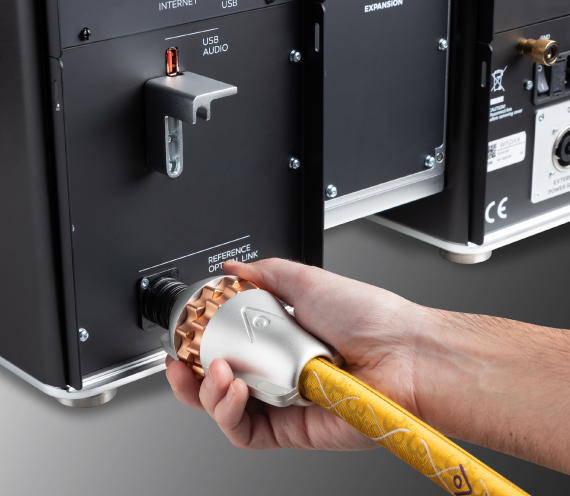
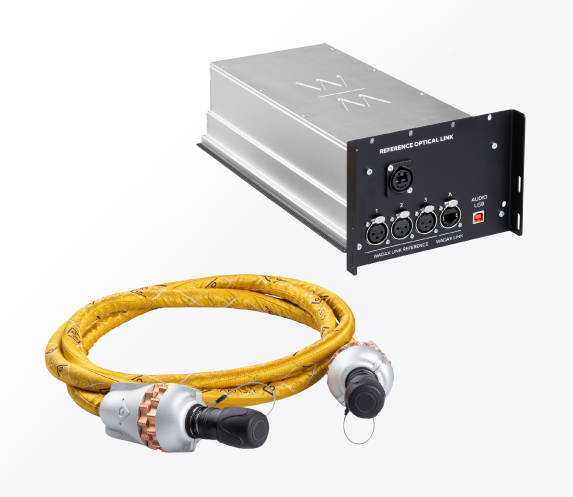
And not forgetting the Roon Browser
Sorting and handling files, maintaining compatibility across platforms and updates is a massive software-based challenge. Rather than devoting huge efforts to creating our own file-browser we prefer to concentrate on engineering and operational issues. For that reason, we have incorporated the Roon browser into the Reference Server, the most intuitive and comprehensive browser available. Not only does it make the Reference Server incredibly easy to use, it ensures cross-compatibility with existing Roon-based storage and libraries. By far the most widely used storage system, this creates the easiest upgrade/transfer path for users to access material stored on existing Nucleus and NAS drive systems.
Dimensions: 48 cm (W) x 43.5 cm (D) x 11.5cm (H)
Power: 100/110/220V, switchable by service, max 100W.
Remote support and OTA upgrade:
software upgradeable over the Internet
Operating Temperature: 41ºF – 95ºF, 5ºC – 35ºC
Operating Humidity: 15% – 75%, no condensations.
Internet connection is required with a minimal bandwidth of 20Mbps
Roon account required
Ethernet speed capability: 1,000Mbps
1 Wadax Akasa optical connection
4 bays for storage expansion
1 USB Audio port
1 Service USB port
Supported formats:
WAV, WAV64, AIFF, FLAC, ALAC, OGG, DSD
Weight: 94lbs (43Kg).
